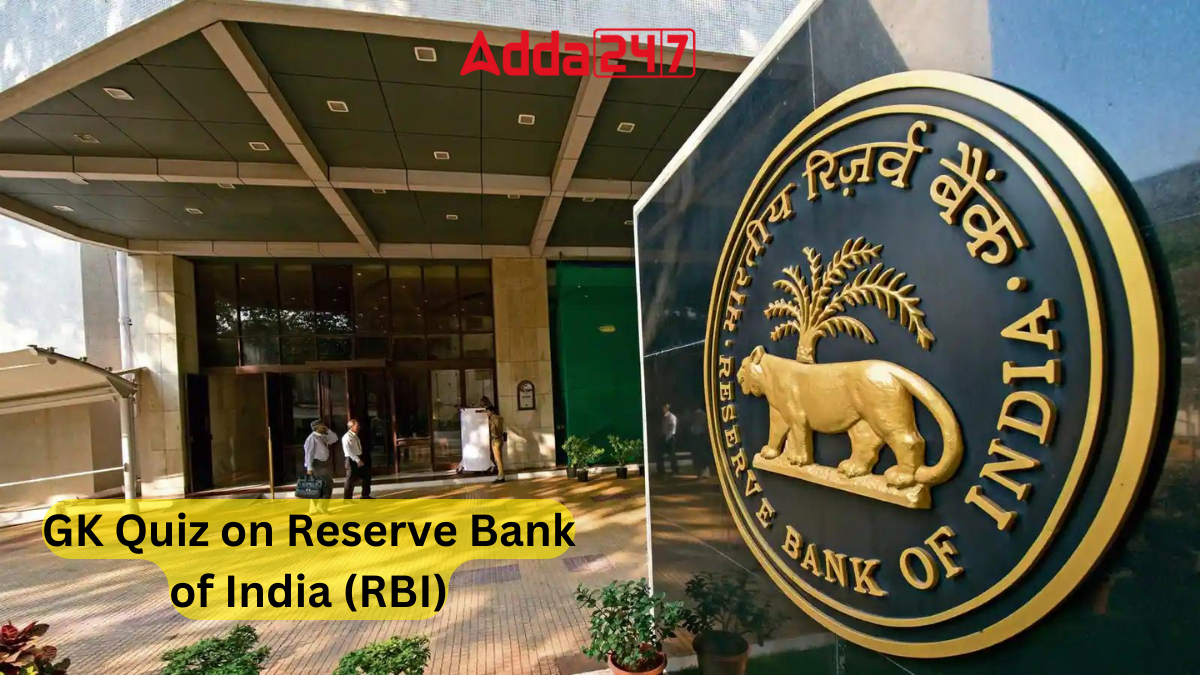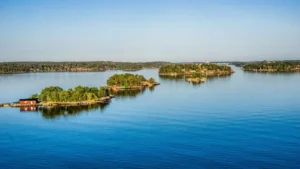The Reserve Bank of India (RBI), India’s central banking institution, plays a pivotal role in the nation’s economic landscape. From regulating monetary policies to overseeing the banking sector, the RBI’s functions are integral to India’s financial stability. Test your knowledge about the Reserve Bank of India with this insightful quiz:
Central Bank of India – Reserve Bank of India (RBI)
The Reserve Bank of India (RBI), India’s central bank, operates under the Ministry of Finance, Government of India, regulating the banking system and managing the supply of the Indian rupee. It oversees the country’s payment systems and fosters economic development. The Bharatiya Reserve Bank Note Mudran (BRBNM) division prints currency notes in Mysore and Salboni. Additionally, it collaborates with the Indian Banks’ Association to regulate payment systems and established the Deposit Insurance and Credit Guarantee Corporation to insure deposits and guarantee credit facilities for Indian banks.
GK Quiz on Reserve Bank of India (RBI)
The Reserve Bank of India (RBI), India’s central bank, operates under the Ministry of Finance, Government of India, regulating the banking system and managing the supply of the Indian rupee. Let’s boost your knowledge about India’s Central Bank, Reserve Bank of India (RBI) with our GK (General Knowledge) quiz on Reserve Bank of India (RBI).
Q1. When was the Reserve Bank of India established?
a) 1 April 1947
b) 1 April 1950
c) 1 April 1935
d) 1 April 1961
S1. Ans. (c) 1 April 1935
Sol. The Reserve Bank of India was established on April 1, 1935 in accordance with the provisions of the Reserve Bank of India Act, 1934.
Q2. Where is the headquarters of the Reserve Bank of India located?
a) New Delhi, India
b) Kolkata, West Bengal, India
c) Mumbai, Maharashtra, India
d) Bengaluru, Karnataka, India
S2. Ans. (c) Mumbai, Maharashtra, India
Sol. The headquarters of RBI is in Mumbai.
Q3. Who is the current Governor of the Reserve Bank of India?
a) Raghuram Rajan
b) Urjit Patel
c) Shaktikanta Das
d) D. Subbarao
S3. Ans. (c) Shaktikanta Das
Sol. As of the current date of April 2023, the present Governor of the Reserve Bank of India (RBI) is Shaktikanta Das.
Q4. Which division of the RBI is responsible for printing and minting Indian currency notes?
a) National Payments Corporation of India
b) Deposit Insurance and Credit Guarantee Corporation
c) Bharatiya Reserve Bank Note Mudran
d) Monetary Policy Committee
S4. Ans. (c) Bharatiya Reserve Bank Note Mudran
Sol. Bharatiya Reserve Bank Note Mudran (BRBNM) is a specialised division of Reserve Bank of India which is under the ownership of Ministry of Finance of the Government of India.
Q5. What is the name commonly used to refer to the Reserve Bank of India?
a) Reserve Street
b) Mint Avenue
c) Currency Lane
d) Mint Street
S5. Ans. (d) Mint Street
Sol. RBI is the central bank of India which controls the issuance and supply of the Indian rupee. It is also referred to as the Mint Street.
Q6. Which organization did the Reserve Bank of India collaborate with to establish the National Payments Corporation of India?
a) Indian Banks’ Association
b) Asian Clearing Union
c) Alliance for Financial Inclusion
d) Monetary Policy Committee
S6. Ans. (a) Indian Banks’ Association
Sol. The National Payments Corporation of India (NPCI) is an initiative taken by the Reserve Bank of India (RBI) and Indian Bank’s Association (IBA) to operate the retail payments and settlement systems in India.
Q7. What is the purpose of the Deposit Insurance and Credit Guarantee Corporation, established by the RBI?
a) Regulating credit card transactions
b) Providing insurance of deposits and guaranteeing credit facilities to Indian banks
c) Promoting financial literacy programs
d) Overseeing foreign exchange transactions
S7. Ans.(b) Providing insurance of deposits and guaranteeing credit facilities to Indian banks
Sol. The preamble of the Deposit Insurance and Credit Guarantee Corporation Act, 1961 states that it is an Act to provide for the establishment of a Corporation for the purpose of insurance of deposits and guaranteeing of credit facilities and for other matters connected therewith or incidental thereto.
Q8. Which cities’ interests are represented by the local boards of the Reserve Bank of India?
a) Mumbai, Kolkata, Chennai, and New Delhi
b) Mumbai, Kolkata, Hyderabad, and Bangalore
c) Mumbai, Kolkata, Chennai, and Delhi
d) Mumbai, Delhi, Bangalore, and Ahmedabad
S8. Ans. (c) Mumbai, Kolkata, Chennai, and Delhi
Sol. The RBI has four regional representations: North in New Delhi, South in Chennai, East in Kolkata and West in Mumbai.
Q9. What is the primary function of the RBI?
a) To manage the country’s foreign exchange reserves
b) To issue currency notes
c) To regulate commercial banks
d) All of the above
S9. Ans. (d) All of the above
Sol. The primary functions of the RBI are:
(i) To manage the country’s foreign exchange reserves
(ii) To issue currency notes
(iii) To regulate commercial banks
Q10. What is the symbol of the RBI?
a) Tiger
b) Palm tree
c) Elephant
d) Both a and b
S10. Ans. (d) Both a and b
Sol. Tiger is the animal present on the insignia of the RBI. Insignia of the RBI consist of a tiger and palm tree. Initially, Insignia of the RBI consist lion and palm tree, but later it was decided to replace the lion with the tiger.




 Narpuh Wildlife Sanctuary: Conservation ...
Narpuh Wildlife Sanctuary: Conservation ...
 Top and Bottom 10 Countries in the Globa...
Top and Bottom 10 Countries in the Globa...
 Which Country has the Highest Number of ...
Which Country has the Highest Number of ...







